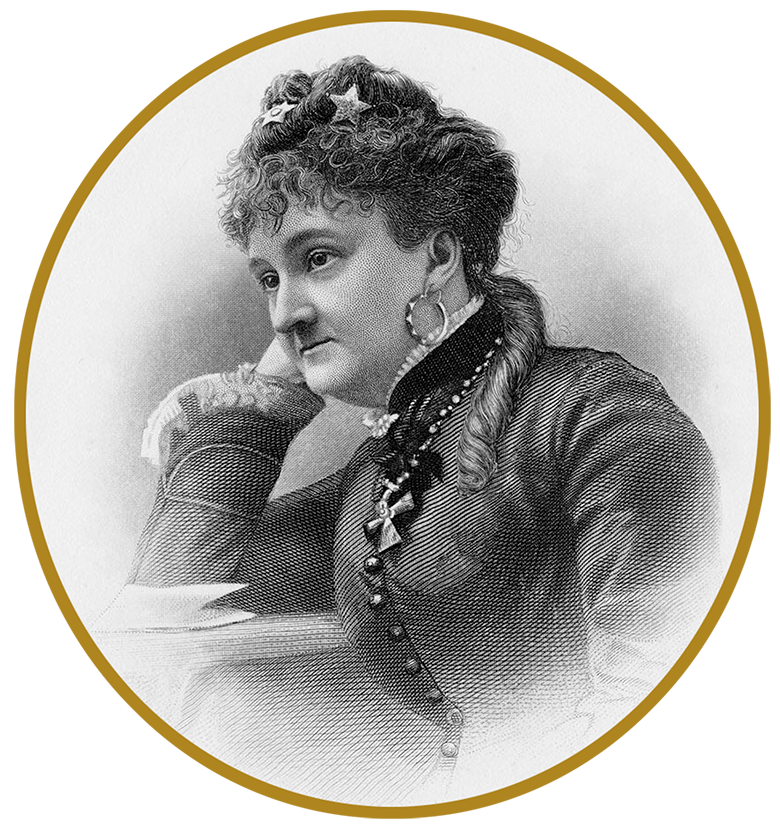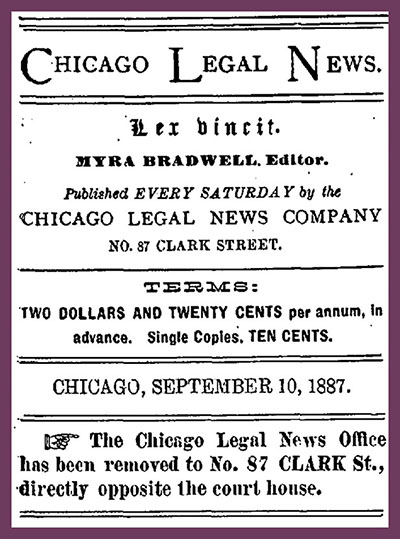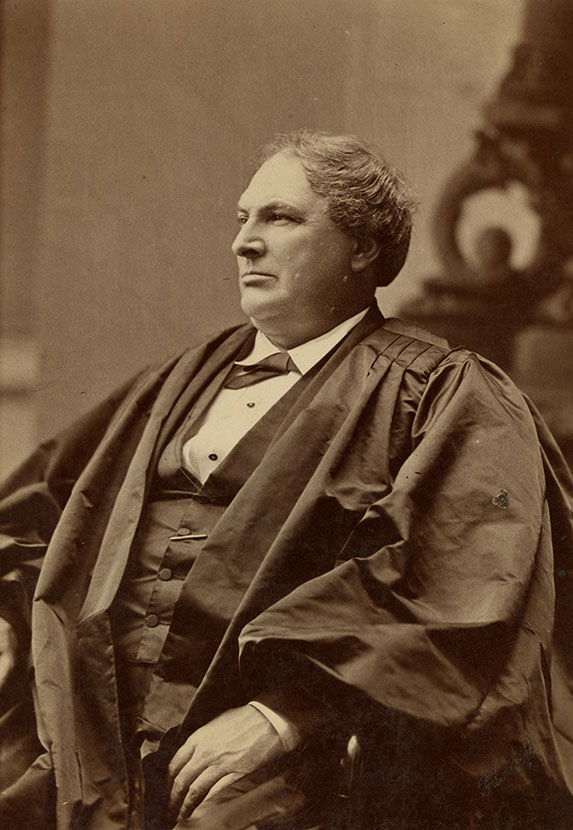In Re Lady Lawyers:
The Rise of Women Attorneys and the Supreme Court
Myra Bradwell and the Chicago Legal News
In the mid-1850s, Myra Bradwell learned the fundamentals of the legal profession from her husband so she could help run the law practice he opened in Chicago, Illinois. Bradwell's interest in the legal field expanded when she founded and became the first woman to edit a nationally circulated legal publication, the Chicago Legal News, in 1868. The weekly newspaper provided her with an outlet for her views on women’s rights. To fulfill her role as editor-in-chief and publisher, she had to obtain a special charter from the Illinois legislature allowing her to own and operate a business as a married woman. Under the charter—and contrary to generally applicable law at the time—she was allowed to enter into contracts without involving her husband and could keep her earnings.
 Portrait of Myra Bradwell, by an unknown artist.
Portrait of Myra Bradwell, by an unknown artist.
 The Chicago Legal News, September 10, 1887.
The Chicago Legal News, September 10, 1887.
Library of Congress
Bradwell v. Illinois (1873)
 Cabinet card of Justice Samuel F. Miller by Samuel Fassett, 1876.
Cabinet card of Justice Samuel F. Miller by Samuel Fassett, 1876.
In 1869, Bradwell became the first woman to pass the Illinois bar exam, but the Illinois Supreme Court denied her a license to practice because she was married. She brought her case to the Supreme Court of the United States.
In Bradwell v. Illinois (1873), Bradwell’s lawyers argued to the Supreme Court that Illinois violated Bradwell’s rights under the Privileges and Immunities Clause of the U.S. Constitution’s 14th Amendment when it denied Bradwell a license to practice law. In an 8-1 decision, the Court disagreed. Justice Samuel F. Miller delivered the opinion of the Court, which held that state regulation of the practice of law was independent of citizenship of the United States, and thus was not protected by the 14th Amendment. Justice Joseph P. Bradley’s concurring opinion, which was joined by Justices Noah H. Swayne and Stephen J. Field, summarized the then-prevalent views of women’s role in society: “The paramount destiny and mission of woman are to fulfill the noble and benign offices of wife and mother…” Chief Justice Salmon P. Chase was the lone dissenter in the case.
Bradwell never practiced law, although she was later admitted to the bars of the Illinois Supreme Court in 1890 and the Supreme Court of the United States in 1892. Managing the Chicago Legal News and reporting on the progress of women entering the legal profession occupied her time until her death in 1894.